Wildlife Wednesday: Recent Butterfly Sightings at the Nature Center
Springtime is a great time to see butterflies at the Nature Discovery Center. You may see one fluttering through the forest, visiting our wildflower gardens around the Henshaw House, or flitting from flower to flower in the Pocket Prairie. In this week’s Wildlife Wednesday, we’ll have a look at few species of butterfly that have appeared over the last few weeks.
Gulf Fritillaries (Agraulis vanillae, above photo) are 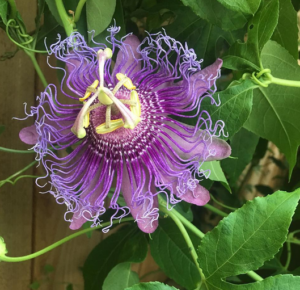 one of our most common butterflies in the park. Not actually related to other fritillaries, these butterflies are actually a kind of longwing or Heliconian butterfly. While the adults will feed on nectar from a variety of flower species, the larvae (caterpillars) will only feed on passionvines (Passiflora spp., Left photo). Passionvine leaves are toxic, and in turn the caterpillars are toxic, as are the adults. The bright orange and black coloration acts as a warning. Gulf Fritillaries have a wingspan of about 3.5 inches.
one of our most common butterflies in the park. Not actually related to other fritillaries, these butterflies are actually a kind of longwing or Heliconian butterfly. While the adults will feed on nectar from a variety of flower species, the larvae (caterpillars) will only feed on passionvines (Passiflora spp., Left photo). Passionvine leaves are toxic, and in turn the caterpillars are toxic, as are the adults. The bright orange and black coloration acts as a warning. Gulf Fritillaries have a wingspan of about 3.5 inches.
Another common species of butterfly in this park is the large black Spicebush Swallowtail Butterfly (Papilio troilus), which can often be seen flying in an undulating manner through the forested sections of the park, but is really common all over. These large black butterflies have a 4 inch wingspan, and often fly close to the ground. The larvae feed on plants in the Laurel family, like Sweetbay, Red Bay, Spicebush, and non-native Camphor trees.
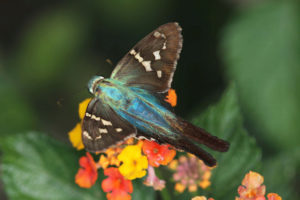 A butterfly that is not so common in the park, but that recently made an appearance is the gorgeous little Long-tailed Skipper (Urbanus proteus). We saw one feeding on white clover flowers near the Pocket Prairie a few days ago. These blue and brown butterflies have long projections on the hindwings, which look like 2 tails. They lay their eggs, and the larvae feed on plants in the legume family, like wild peas, wisteria, beans, and various others.
A butterfly that is not so common in the park, but that recently made an appearance is the gorgeous little Long-tailed Skipper (Urbanus proteus). We saw one feeding on white clover flowers near the Pocket Prairie a few days ago. These blue and brown butterflies have long projections on the hindwings, which look like 2 tails. They lay their eggs, and the larvae feed on plants in the legume family, like wild peas, wisteria, beans, and various others.
Thanks for joining us for another Wildlife Wednesday! Come out to the park soon, and see if you can spot some of these butterflies in the wild.
See you soon,
Eric Duran
Staff Naturalist
photos: Gulf Fritillary and Passionflower by Eric Duran; Spicebush swallowtail by Greg Hume | Flickr; Long-tailed Skipper by John Flannery | Flickr


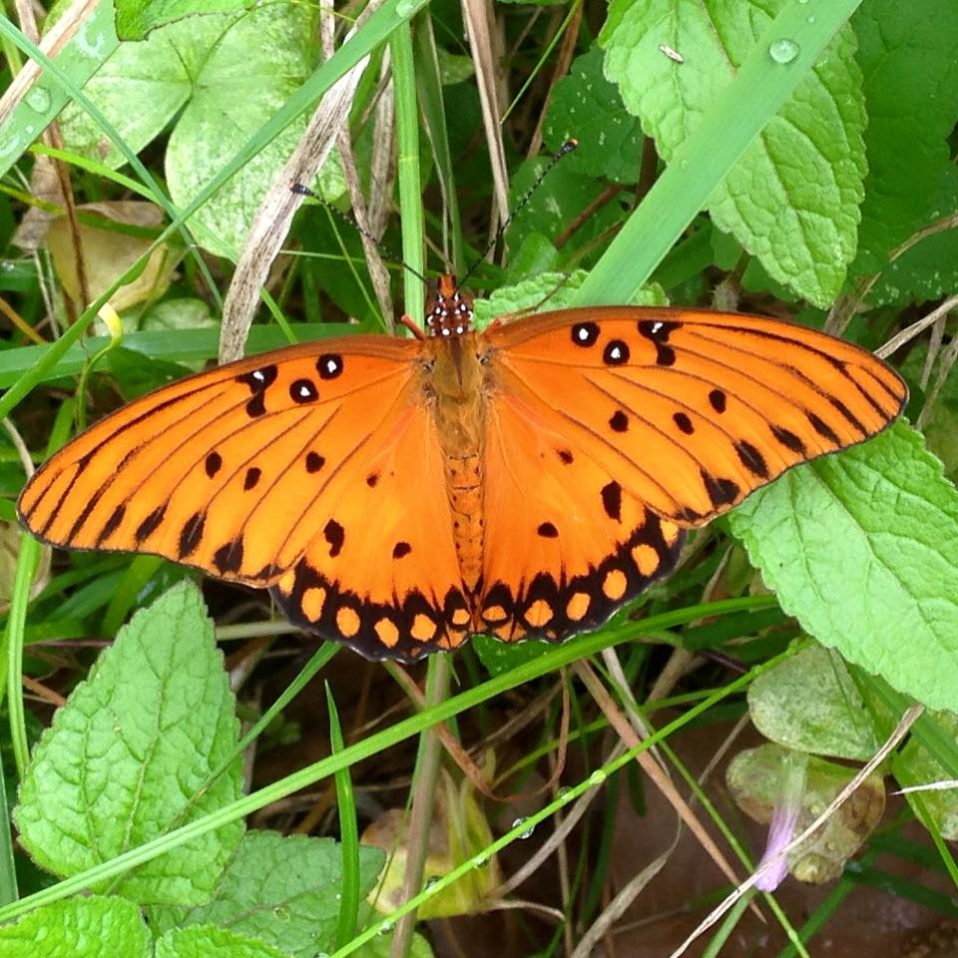
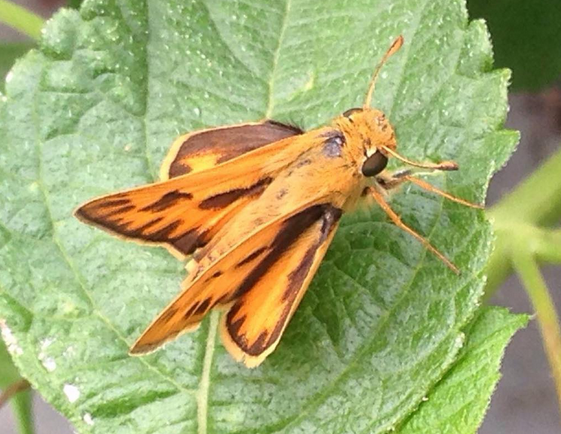
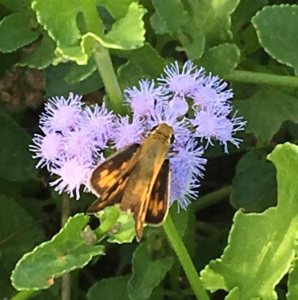
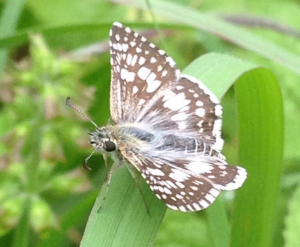
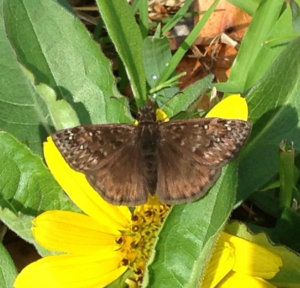 enal’s Duskywing (Erynnis juvenalis) is one of 2 species of Duskywing (dark colored skippers that keep their wings open and flattened when on a perch), found in our park. The other is the very similar Horace’s Duskywing, though there are many other species of Duskywing across the country. The caterpillars of these skippers feed on oak leaves. They are similar in size to the Checkered skippers, ~3.8 cm wingspan. Duskywings can make themselves rather conspicuous with their darting, climbing, and diving flight patterns, and their habit of sunning out in flat open meadows in plain sight.
enal’s Duskywing (Erynnis juvenalis) is one of 2 species of Duskywing (dark colored skippers that keep their wings open and flattened when on a perch), found in our park. The other is the very similar Horace’s Duskywing, though there are many other species of Duskywing across the country. The caterpillars of these skippers feed on oak leaves. They are similar in size to the Checkered skippers, ~3.8 cm wingspan. Duskywings can make themselves rather conspicuous with their darting, climbing, and diving flight patterns, and their habit of sunning out in flat open meadows in plain sight.